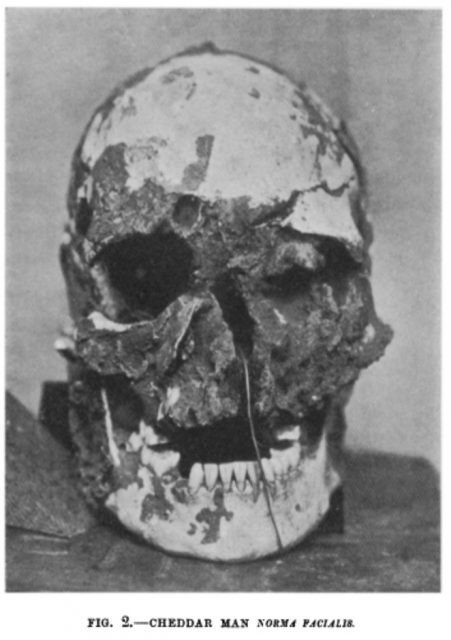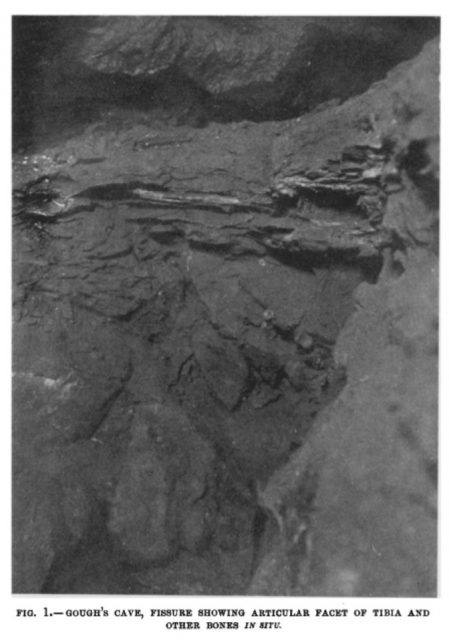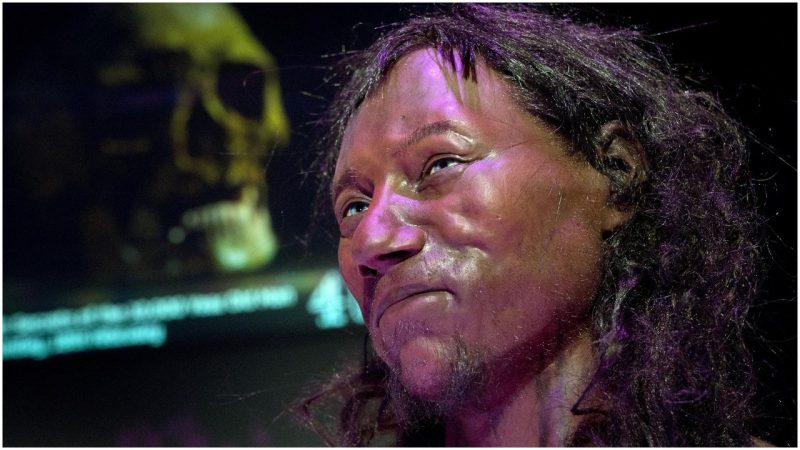The February 7th unveiling of the facial re-construction of “Cheddar Man,” a skeleton found in a cave in southwest England in 1903 and dated to 10,000 years ago, has captured the world’s attention, displaying a model of a man with dark brown skin, blue eyes, and curly brown hair.
Scientists now believe the light pigmentation of Northern Europeans developed much more recently than previously estimated. Less than 6,000 years ago, Europeans most likely shifted to the new lighter color, due to genetic variants and dietary factors.
This is the first time that scientists have used genome analysis for a facial reconstruction of a prehistoric Briton. The DNA was extracted from Cheddar Man’s skull, drilling a 2mm-diameter hole to get a few milligrams of bone powder
“I first studied Cheddar Man more than 40 years ago,” said Professor Chris Stringer, a physical anthropologist working at London’s Natural History Museum, in the recent press conference. “To go beyond what the bones tell us and get a scientifically based picture of what he actually looked like is a remarkable and from the results quite a surprising achievement.” Researchers of the Natural History Museum, where Cheddar Man is kept, conducted the reconstruction in partnership with scientists from University College London. These scientists analyzed the results, including gene variants associated with hair, eye, and skin color.

Scientists believe that Cheddar Man’s contemporaries hunted with a bow and arrow, fished with a harpoon, and lit fires. “They might have traded flints and had domesticated dogs,” according to a story in The Guardian. “They also had to dodge cave bears and wolves.” Cheddar Man, who was five foot five inches in height, probably died in his twenties (from the markings on his head, perhaps violently) and was placed in the cave–how called Gough’s Cave, located in Somerset’s Cheddar Gorge–by others. The conditions in the cave preserved the skeleton.
Cheddar Man has yielded many important discoveries. In 1997, a DNA experiment was carried out by Oxford scientists that connected his remains to people living in England today. Adrian Targett, a high-school history teacher who lived in Somerset, near the cave, was proven to be a descendant of Cheddar Man. This supported the theory that the early modern humans from the “middle Stone Age” who migrated to Britain approximately 11,000 years ago are the ancestors of approximately 10 percent of the population of present-day England. This group had walked across a land mass called Doggerland that once connected Britain to mainland Europe.
Various human species “have been coming to Britain for nearly a million years, at least 10 waves of occupation, and we’re in the last wave,” said Professor Stringer in a recent documentary. Neanderthals came about 60,000 years ago, joined 20,000 years ago by the first early modern humans who originally came from Africa. Periods of extreme cold drove them back and forth until about 11,000 years ago, when humans “came to stay,” while the Neanderthals disappeared.

“In the end, only early modern humans survived, and we’re still not sure why that is,” said Professor Stringer. “It could have been partly climate change, rapid climate change, and economic competition. They were hunting the same animals, collecting the same plant resources, wanting to live in the best territories.”
Cheddar Man’s genome “reveals he was closely related to other Mesolithic individuals–so-called Western Hunter-Gatherers–who have been analyzed from Spain, Luxembourg and Hungary,” according to the BBC. “The genomic results also suggest Cheddar Man could not drink milk as an adult. This ability only spread much later, after the onset of the Bronze Age.”
The discovery that a 10,000-year-old man living in Britain had dark brown skin has ignited a perhaps predictable bit of protest.
Tom Booth, an archaeologist at the Natural History Museum who worked on the project, said: “It really shows up that these imaginary racial categories that we have are really very modern constructions or very recent constructions, that really are not applicable to the past at all.”
In the community where Cheddar Man once lived, there is pride in one of their own.
Rachel Andrews, who was tending the bar at the Black Dog Saloon, a pub at the foot of Cheddar Gorge, told The Guardian, “We’re very proud of Cheddar Man. There’s a really good, strong community spirit around here. We all look after each other and he’s definitely one of us.”
The story of the reconstruction of Cheddar Man will be presented in an upcoming Channel 4 documentary, First Brit: Secrets of the 10,000 Year Old Man.
